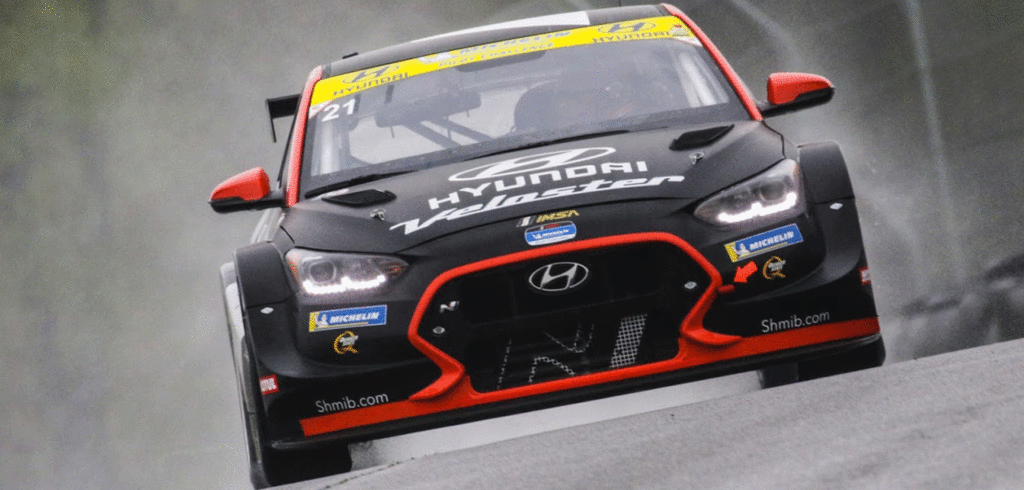At the beginning of the 2019 racing season, I wrote about how appealing the TCR category is from my perspective as a team owner. After listening to some chatter among drivers on our race team and hearing some comments from those that have not yet experienced the TCR class, I thought it may be appropriate to address how awesome these cars are from a pure race driver’s perspective.
In the USA, most motorsports enthusiasts can’t quite wrap their head around a high-performance, front-wheel drive race car. You can count me in that group until I got involved in this initiative a year ago. But when you experience a TCR car from behind the wheel, head out on the track and can go wheel-to-wheel with them, that is when the light bulb really starts to go off. These are truly high-performance race cars, with cornering and braking capabilities that can put many more expensive race cars to shame.
Our driver Mark Wilkins, who won the last race at Mid-Ohio in the Hyundai Veloster N TCR with his teammate Michael Lewis, recently shared this story: “TCR cars are easy to drive fast, they inspire confidence and they have all the bells and whistles which makes them great for amateurs and professionals alike. The TCR story is worth the read as it continues to grow rapidly across the globe.”
In the cockpit, our drivers enjoy a six-speed sequential, paddle-shift gearbox, enabling them to employ either right-foot or left-foot braking techniques, but make no doubt about it, you are going to be hustling inside this race car. Wilkins discussed the characteristics of the Veloster N TCR in further detail: “I think many expect front-wheel-drive cars to be uninspiring and plagued by poor handling and understeer balance. Our Veloster N proves this stigma false and shows how balance between handling and power can align to deliver an exceptionally confident and rewarding driving experience at a limit much higher than one might expect.”
Beyond that, the team atmosphere that a driver enjoys in TCR certainly reflects that of high-level, factory-supported racing at the elite levels. A stroll down the pit lane at any TCR event will see the timing stands filled with engineering support from at least five OEM’s including Hyundai, Honda, Audi, Volkswagen and Alfa Romeo. Spec-racing this is not, and drivers must be prepared to embrace the challenge of providing feedback to a full team of engineering and support staff and embrace that challenge.
Lastly, from a driver’s point of view, you can compete in both sprint, and endurance style competitions with the same race car and minor adjustments. Our BHA team driver Mason Filippi started out the month of March with two race wins in the sprint-style SRO TC America weekend at the Circuit of the Americas, before racing that same car in the 2-hour IMSA Michelin Pilot Challenge event at Sebring two weeks later.
“The downforce and lightweight chassis make the TCR car very competitive the capability of the Veloster N TCR car is extremely high,” said Filippi.



